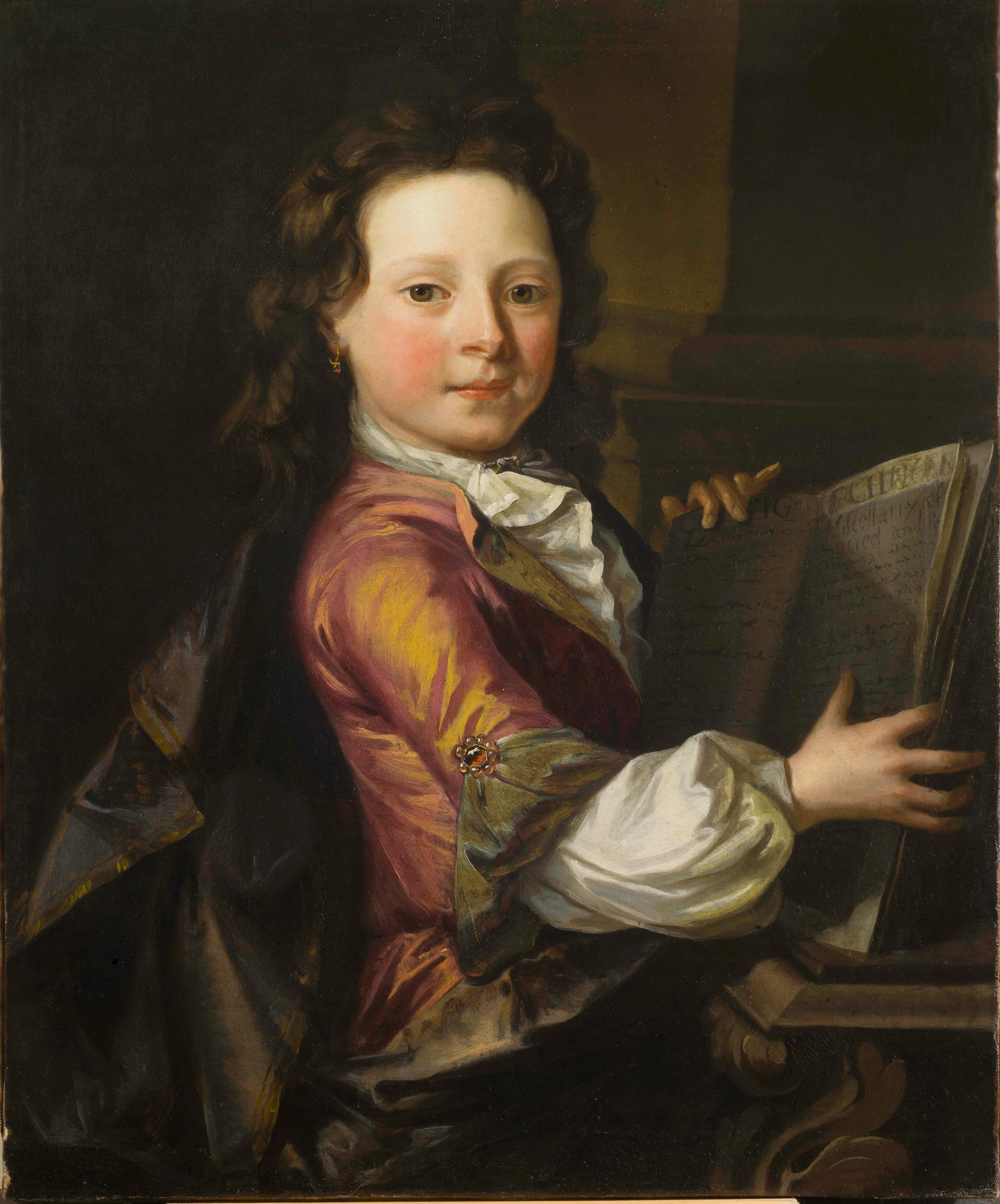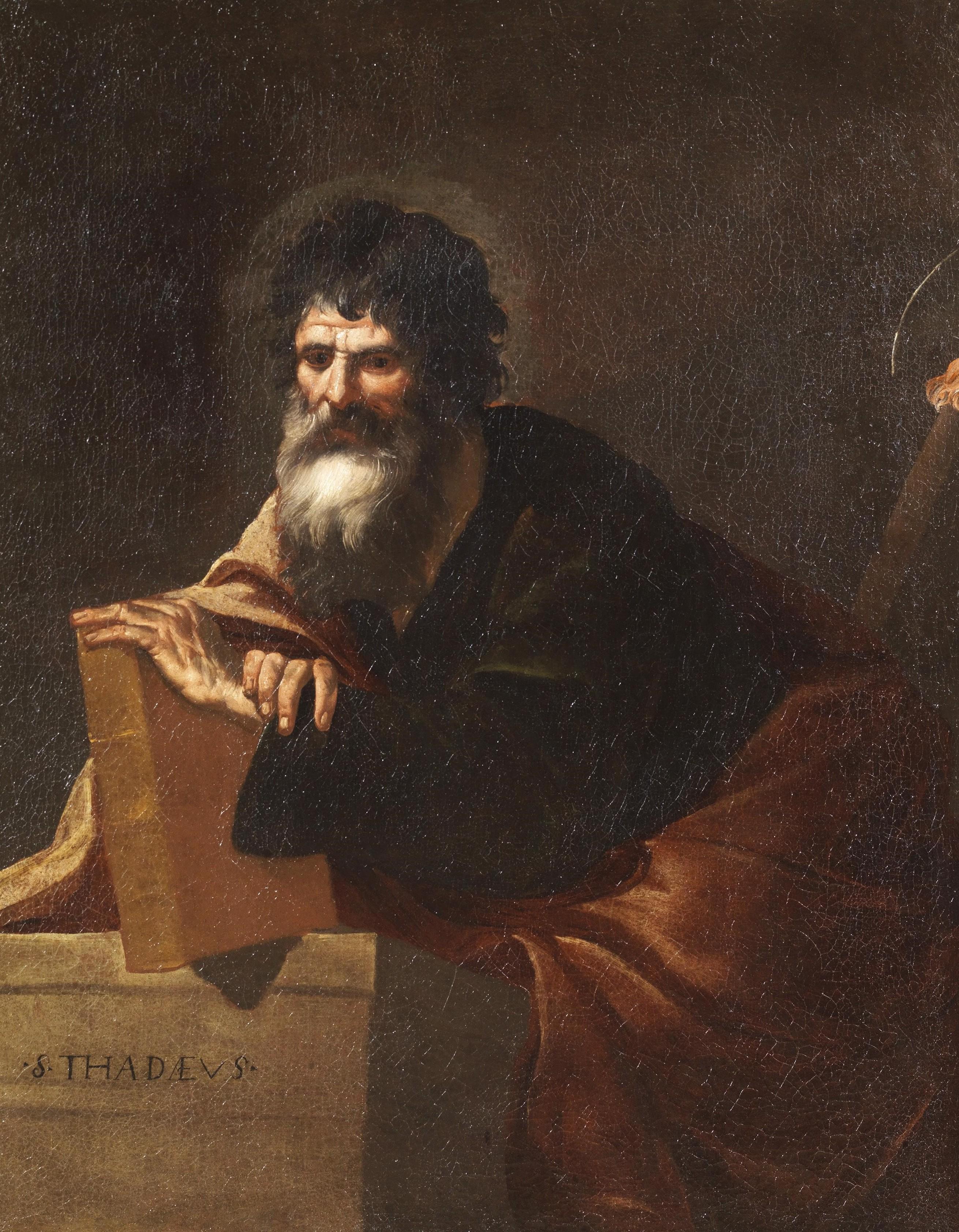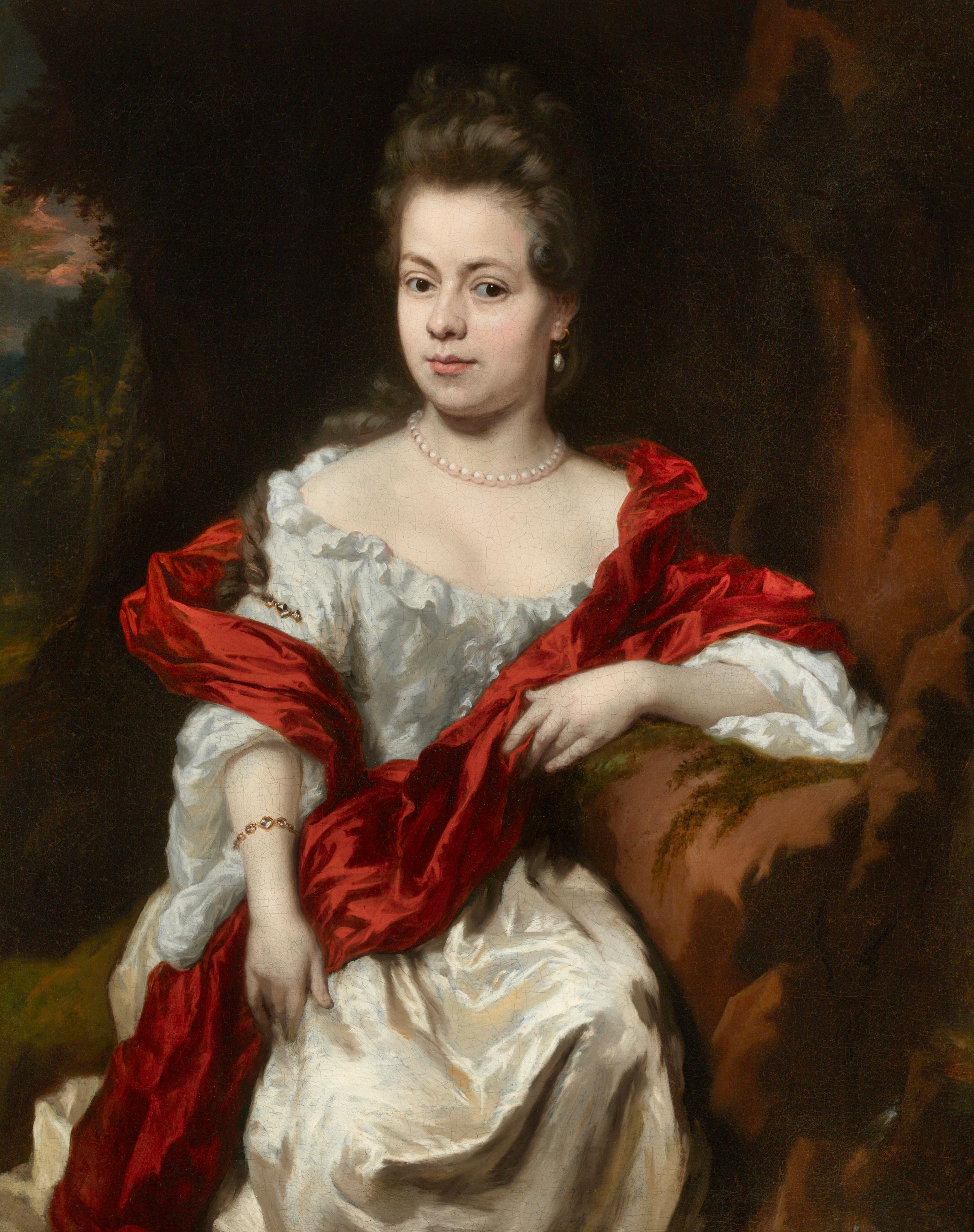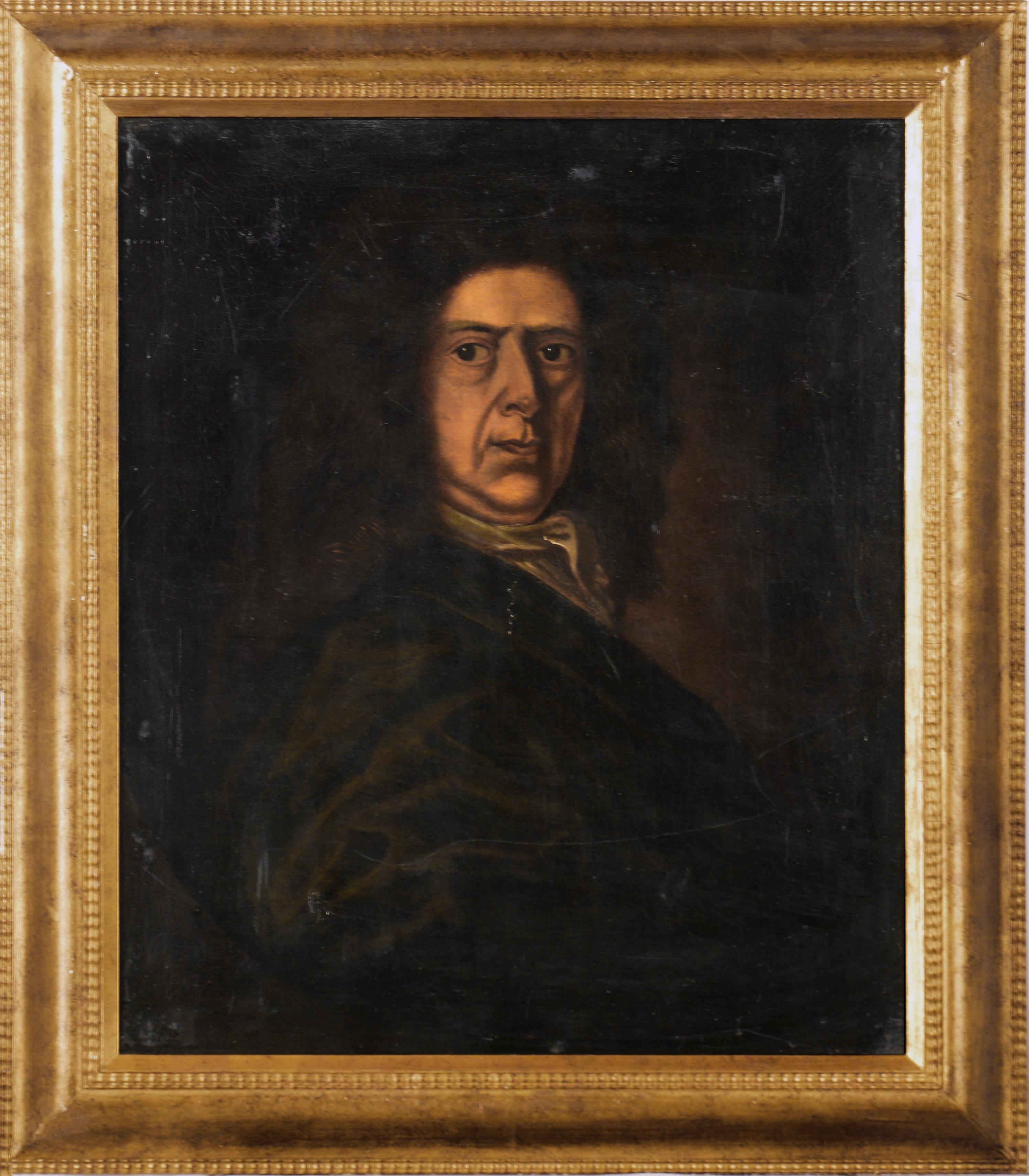Items Similar to English 17th century portrait of John Ludford Esquire
Want more images or videos?
Request additional images or videos from the seller
1 of 11
English 17th century portrait of John Ludford Esquirec.1680
c.1680
About the Item
Portrait of John Ludford (1653-1681), wearing a lace jabot and brown and gold trimmed cloak in a feigned stone oval cartouche. Inscribed 'John Ludford, Esq, nat. 14th March 1653, Ob, 15th September 1681', with old plaque titled 'Mary Beale'
Provenance: Private collection, Surrey
Mary Beale (born Craddock in March 1633) was a prolific English portrait painter, becoming one of the most important portrait painters of the middle classes in 17th century England, being described as one of the first professional female English portrait painters. Her sitters included her family, her immediate circle of friends, particularly the protestant clergy, the landed gentry and nobility.
She was born in Barrow, Suffolk where her father was a rector and she married Charles Beale in 1651. She possibly studied under Robert Walker but later was chiefly influenced by Peter Lely who was a friend and whose work he sometimes allowed her to make copies of. Her most active period was in the 1670's and 80's. After Charles's employment in the government patents office came to an end and Mary`s painting became the principle source of income for the family, Charles worked alongside Mary in managed her studio, mixing her paints and keeping detailed notes of her studio activities and commissions. The notebooks for 1677 and 1681 survive and are found at the Bodleian Library, Oxford and The National Portrait Gallery, London, and Vertue published partial transcripts of others.
Mary Beale was ahead of her time as a woman in 17th century England as not only was she successful as an artist in a working environment dominated by men, but during a stay in the country whilst escaping London from the plague of 1666, she wrote about her views on equality between men and women in marriage in her 'Discourse on Friendship', putting into practice these beliefs in her own life.
Her work often displays her talent in depicting her subjects with a particular sensitivity and empathy such as in the intimate portraits of her two young sons, Bartholomew and Charles, found in Tate Britain, London and in her own self portrait in the National Portrait Gallery, London. She died in Pall Mall and was buried in St James's London in October 1699.
Literature:
Walsh and Jeffree The Excellent Mrs Mary Beale 1975/6
Tabitha Barber Mary Beale - Portrait of a seventeenth century painter, her family and her studio 1999.
- Creation Year:c.1680
- Dimensions:Height: 36.62 in (93 cm)Width: 31.5 in (80 cm)
- Medium:
- Movement & Style:
- Circle Of:Mary Beale (1633 - 1699, English)
- Period:Late 17th Century
- Condition:
- Gallery Location:Bath, GB
- Reference Number:1stDibs: LU95213411292
About the Seller
5.0
Vetted Seller
These experienced sellers undergo a comprehensive evaluation by our team of in-house experts.
Established in 2002
1stDibs seller since 2015
36 sales on 1stDibs
Typical response time: 1 hour
Associations
The British Antique Dealers' AssociationLAPADA - The Association of Arts & Antiques DealersInternational Confederation of Art and Antique Dealers' Associations
- ShippingRetrieving quote...Ships From: Bath, United Kingdom
- Return PolicyA return for this item may be initiated within 3 days of delivery.
More From This SellerView All
- English 17th century portrait of a ladyBy Sir Peter LelyLocated in Bath, SomersetA 17th century English portrait of a lady by Sir Peter Lely (1618-1680), half-length in a painted feigned oval, wearing a green silk gown with chestnut coloured cloak over one shoulder, her fair hair curled in the fashionable ringlet style of the period. Oil on canvas in an English giltwood 'Lely' frame. We are grateful to Diana Dethloff and Catharine MacLeod (who are currently working on a Lely catalogue raisonné) for their confirmation of Lely as the artist from photograph analysis of this previously unidentified early work. Provenance: Private collection Nottingham until 2021 Mellors and Kirk sale December 2000, lot 1173 The sitter is likely to have been from an upper class or aristocratic family in court circles, who were the main source of Lely`s patronage. The simple composition serves to highlight the beauty of the sitter through portraying her pale decolletage and complexion, set against the gentle gaze of her blue eyes, the soft blush of her cheeks and her full red lips. Peter Lely (1618-1680) was originally of dutch origin and became Principle Painter to the King in 1661, following in the footsteps of Van Dyck who had died in 1641. He dominated the portrait painting scene in England for over 20 years, creating a distinctive 'court look' in his work which had a strong influence on many other artists. He had an extremely successful and popular portrait practice which meant that he soon had to develop production methods that could accommodate the high demand for portraits, and also for copies and versions of them which were given as gifts to family and courtiers. The use of studio assistants was a common practice for busy artists and as with Van Dyck, Lely is known to have used specialist assistants to execute particular parts of his paintings. Artists who worked in Lely`s studio included John Baptist Gaspars who specialised in drapery painting, William Wissing, John Greenhill...Category
17th Century Baroque Portrait Paintings
MaterialsOil, Canvas
- English 17th century portrait of a lady in an ivory silk gown on a terraceLocated in Bath, SomersetPortrait of a 17th century lady, three-quarter length, in an ivory silk gown standing on a garden terrace. The lady, painted circa 1670, gestures with her hand towards the gardens and land beyond off her country estate, wearing a sumptuous ivory silk gown adorned with pearls and precious stones and pearl earrings and necklace, signaling her wealth and status. She wears a ring on her left hand, which combined with her pale gown possibly alludes to her recent marriage. There are traces of a signature in ligature 'JG' in a lower fold of the sitter's right hand sleeve. John Greenhill...Category
17th Century Baroque Portrait Paintings
MaterialsCanvas, Oil
- English 19th century portrait painting of a Pointer dog in a woodland landscapeBy John Frederick Herring Sr.Located in Bath, SomersetA black pointer in a woodland landscape by John Frederick Herring Senior, circa 1830. Oil on canvas in a giltwood frame. Provenance: Arthur Ackerman and Son Frost and Reed Blains, Bruton Place, London John Frederick Herring, born in London in 1795, was the son of a London merchant of Dutch parentage, who had been born overseas in America. The first eighteen years of Herring's life were spent in London, where his greatest interests were drawing and horses. In 1814, at the age of 18, he moved to Doncaster in the north of England, and by 1815, had married Ann Harris. His sons John Frederick Herring Jr., Charles Herring, and Benjamin Herring...Category
1830s Victorian Animal Paintings
MaterialsCanvas, Oil
- 18th century portrait of the German Flautist and composer Johann Joachim QuantzBy Arthur DevisLocated in Bath, SomersetPortrait of Johann Quantz (1697-1773), flautist and composer, wearing a blue velvet coat, waistcoat and breeches, standing in a garden landscape with ...Category
18th Century English School Portrait Paintings
MaterialsOil, Canvas
- Attributed to John Riley, 17th century English portrait of a girl on a terraceBy John RileyLocated in Bath, SomersetPortrait of a young girl, full-length, wearing a blue silk gown, standing on a terrace beside a classical urn holding a branch with blossom. Attributed to John Riley...Category
17th Century Old Masters Portrait Paintings
MaterialsOil, Canvas
- A 19th century portrait of a greyhound dog in a verdant landscape, signedBy James Albert ClarkLocated in Bath, SomersetA chestnut coloured greyhound standing in a verdant landscape with a country cottage just visible in the far distance. Signed 'James Clark' (lower right) and dated 1899. Oil on canvas in a giltwood frame. James Albert Clark (1863-1955) was born in London into a family of animal painters on 17 February 1863 to artist James Clark and his second wife Frances Mary Anne...Category
Late 19th Century English School Animal Paintings
MaterialsCanvas, Oil
You May Also Like
- Portrait of a Boy, John Closterman, Large English Portrait Art, Old MasterBy John ClostermanLocated in Greven, DEJohn Clostermann (Osnabrück 1660 - 1711 London) Portrait of a boy, maybe Charles Hinde Oil on canvas, 61 x 74,6 cm John Closterman (also Klosterman) was a portrait painter of the late 17th and early 18th centuries. He primarily portrayed English noblemen and European aristocratic families. His father was already an artist and he trained his son. In 1679 he went to Paris and studied with Francois de Troy. In 1681 he was in London and worked for the artist John Riley, whose studio he took over after his death. In 1696 he was invited to the Spanish court...Category
17th Century Baroque Figurative Paintings
MaterialsCanvas, Oil
- Testa di VecchioLocated in Balerna, TIFrancesco Fracanzano (Monopoli 1612-Napoli 1656) Testa di vecchio Olio su tela, cm 66x52,5 La tela presenta la figura di un uomo anziano a mezza figura con lo...Category
17th Century Baroque Portrait Paintings
MaterialsCanvas, Oil
- Neapolitan caravagist artist, 17th century SAINT JUDE THADDEUSLocated in Tricase, ITNeapolitan caravagist artist, 17th century SAINT JUDE THADDEUS oil on canvas, cm 127x101 (The painting is part of a triptych together with the two holy apostles Saint Thomas and Sai...Category
1620s Baroque Figurative Paintings
MaterialsCanvas, Oil
- G Negri called Il Boccia Baroque Figurative Painting 17th century oil canvasBy Girolamo Negri called Il BocciaLocated in Florence, ITOil on canvas, 62 x 51 cm (without the frame) Even if on the background there is an attribution to “Francesco Gessi pupil of Guido Reni” by the bolognese art historian Guido Zucchini (dated 1945), recent studies are tending to add it to the corpus of Girolamo Negri called Il Boccia (Bologna 1648-1718) due to lots of similarities with his style (the pale and warm palette chosen, the profile) The painting represents a lady on profile wearing a brown turban, a yellow clock...Category
Late 17th Century Baroque Figurative Paintings
MaterialsCanvas, Oil
- Portrait of Noble LadyBy Nicolaes MaesLocated in New Orleans, LASigned and dated "N MAE / 1691" (lower right) Oil on canvas A masterful example of 17th-century Dutch portraiture, this magnificent oil on canvas comes alive with luminous color, dramatic contrast and extraordinary detail. The work was composed by Nicolaes Maes, an artist widely regarded as the most prominent portrait painter of his era in Amsterdam. Fashionably styled, Portrait of a Noble Lady exemplifies the mature style of Maes, executed with the same artistry and attention to detail he imparted on his most important private commissions. This work by Maes comes from the second half of his career and follows in the rich tradition of the great Flemish Baroque painters Peter Paul Rubens and Anthony van Dyck. Like these artists, Maes excels at not only capturing his subjects with a technical perfection but also their inherent elegance and grace. The sitter is draped in luxurious white and red silks and pearls, underscoring the importance and prosperity of his wealthy clientele. She is placed against a dark backdrop, enabling a striking chiaroscuro effect characteristic of the artist’s portraits. Maes’s immense talent for detail and composition is clearly evident. In both palette and proportion, it embodies the somewhat austere style preferred by the artist, which emphasized a painstaking study of the costumes, hairstyles and accessories of his subjects. Such elaborate and highly detailed costuming in portraiture was a fashionable way to show one's wealth in the 17th century, particularly among the emerging class of wealthy merchants. Similar works by the painter can be found in the Rijksmuseum (Amsterdam), National Gallery (London), National Gallery of Art (Washington, D.C.), Metropolitan Museum of Art (New York) and Philadelphia Museum of Art, among others. Nicolaes Maes was born in Dordrecht in 1634 to a prosperous cloth merchant. Around 1848, he moved to Amsterdam to study under Rembrandt for several years before returning to his native Dordrecht, where he established himself as a painter of genre scenes and portraits. In the 1650s, Maes traveled to Antwerp where he studied the work of Flemish artists such as Peter Paul Rubens, Anthony van Dyck and Jacob Jordaens...Category
17th Century Baroque Portrait Paintings
MaterialsCanvas, Oil
- Portrait of an English Gentleman "Sir"Located in Soquel, CAPortrait of a nobleman by an unknown artist , titled "Sir" on a London label on verso. A man dressed in dark robes with a white collar looks directly at the viewer. Heavy age toning ...Category
Late 18th Century Baroque Figurative Paintings
MaterialsOil, Canvas





